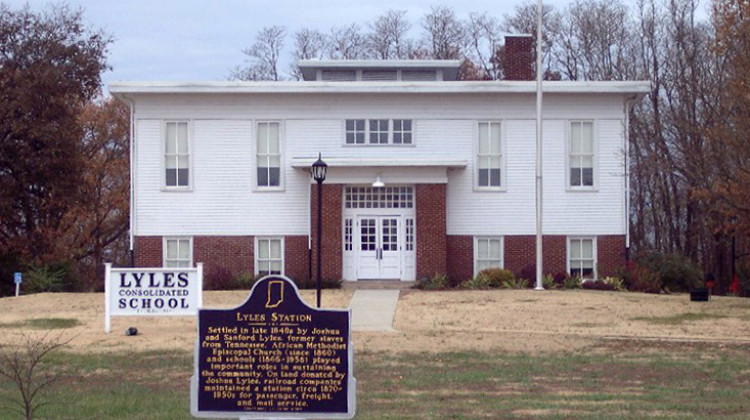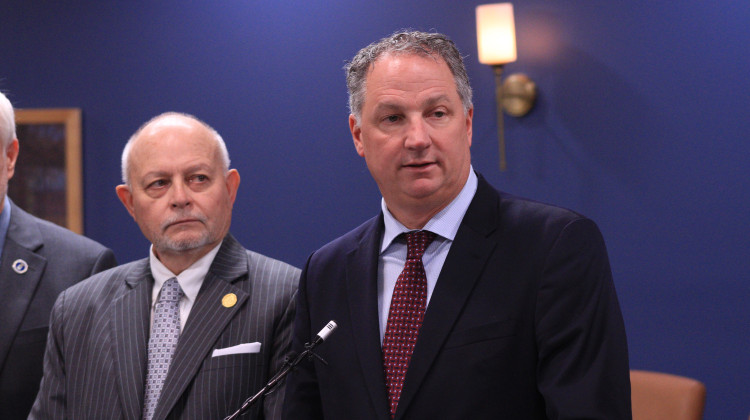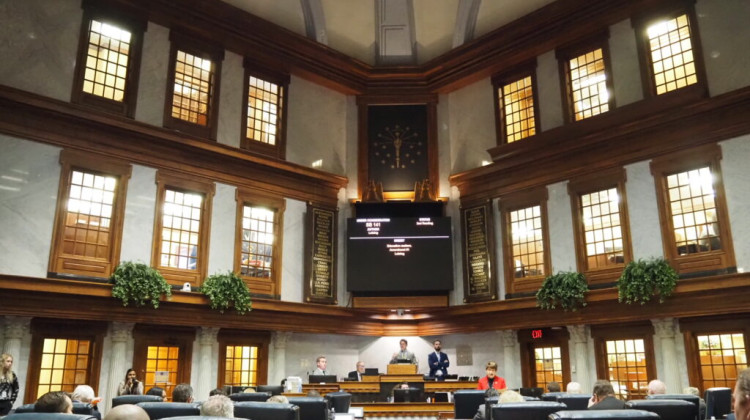
The Lyles Consolidated School operates as a living history museum. A $25,000 grant from the Standiford H. Cox Fund will help restore two other buildings in the settlement.
Kurt Weber/CC-BY-SA-3.0RAYONNA BURTON-JERNIGAN Evansville Courier & Press
LYLES STATION, Ind. (AP) — Lyles Station, the last remaining historic African-American settlement in Indiana, is working to live up to its mission of creating and maintaining a community for future generations.
“Lyles Station is here doing the right thing, and helping people across the world get on their feet, so then they can help someone else,” said Stanley Madison, president of the Lyles Station Historic Preservation Corporation.
In September, 11 African-American sites in Indiana were chosen to receive grants to be used for the preservation of landmarks through the Standiford H. Cox Fund. The fund was established by Cox, Eli Lilly’s first Black chemist, to support restoration, preservation and operation of African-American historic sites in Indiana.
Listen: Historic African-American Sites In Indiana Receive Funding
Lyles Station was one of the sites picked. It received a grant to continue rehabilitation on the Joseph Lucas Home which is becoming an interpretive center and to make repairs to the foundation and ceiling of Wayman Chapel.
With the $25,000 grant, Madison hopes to kick start his dream of restoring other buildings on the property to attract more young people.
“When these people came here in early years, they saw that opportunity of putting down roots and becoming someone,” Madison said. “That’s what we’re trying to do with this museum is to shape and mold who we are and how we are giving back to the community.”
The story of Lyles Station dates to 1813, when Charles Grier purchased 20 acres of farmland. He eventually bought more, as the farm grew to 268 acres by 1825. He traveled around and spoke about his farmland’s fertile soil and its vicinity to two rivers for moving harvested crops.
Following that, Grier connected with Thomas Cole who married into the Lyles family and eventually purchased more than 800 acres of land. It became known as the Switch Settlement, a safe-haven for fugitive slaves who needed rest.
Lyles Station gets its name from Joshua Lyles, a free slave who migrated to the settlement from Tennessee in the 1830s. Following the purchase of more land and the end of the Civil War, Lyles returned to Tennessee to encourage friends, family and recently freed slaves to join him at the Indiana settlement. There was room for many more: Lyles Station had more than 1,000 acres of land.
“This young community, when it first started out, was dedicated. It set down deep roots.” Madison said.
From 1880 through 1913, the self-sustaining community blossomed to some 800 residents. In 1887, Wayman Chapel AME Church, the station’s second church was built. In its prime, Lyles Station also had 55 households, an elementary school, two general stores, a railroad station, a lumber mill and a post office.
A flood in 1913 damaged much of the land and caused an exodus. Afterwards, the Lyles Consolidated School open in 1919. It was an integrated school until 1922, transitioned to an all-black school and then integrated again in 1950. The school closed its doors in 1958, then reopened as a museum in 2003.
The museum has been involved in helping others preserve the important history of Lyles Station and African-American farming. Lyles Station volunteers have curated a permanent exhibit in the National Museum of African-American History & Culture that displays different artifacts that have been passed down for generations. They also host a heritage classroom where students in third and fourth grade spend a week in a classroom modeled to match the original 1920s-era design.
Another program that the museum offers is their Underground Railroad Trunk, where any teacher in a 50-mile radius of the museum is able to get a trunk full of artifacts, readings and lessons to educate students on the Underground Railroad.
Madison hopes he can apply for more grants to further develop Lyles Station. He’d like to establish campgrounds, an amphitheater to agriculture classes, he hopes that he can create a way to attract more young people to learn everything about farming.
“We need to share (the history) with as many young minds as we can,” said Madison on the future plans of Lyles station. “A field trip or a Saturday afternoon is so important for them to learn about the early African American history of being farmers and how we were were able to take (what seemed like) worthless land, and some flooding land and make a living.”
Source: Evansville Courier & Press
 DONATE
DONATE






 Support WFYI. We can't do it without you.
Support WFYI. We can't do it without you.